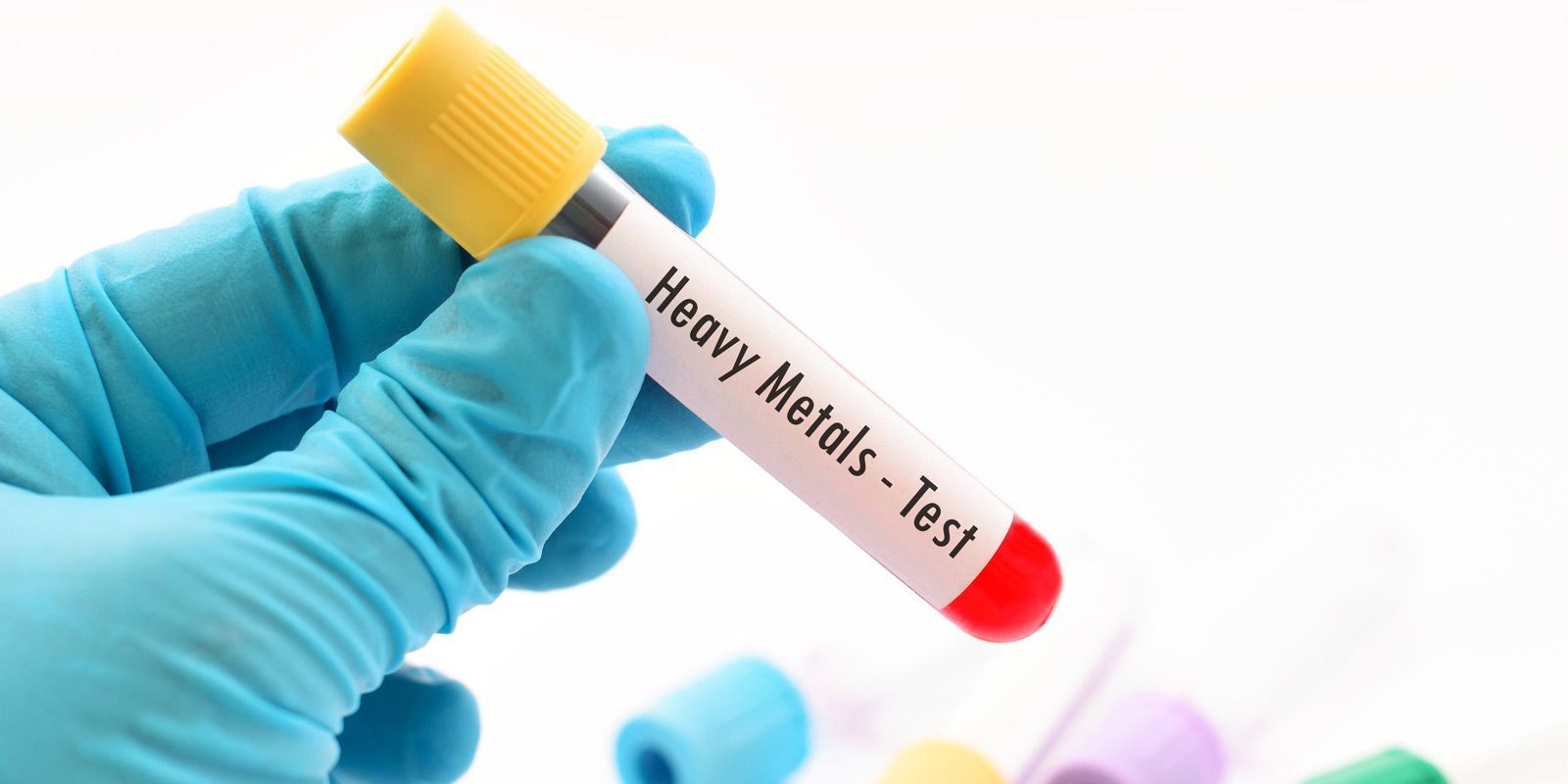Natural Remedies for Heavy Metal Poisoning at the Healing Arts NYC Health and Wellness Center in Manhattan NY 10017 and Connecticut
What is Heavy Metal Toxicity?
Heavy metal toxicity is a term used to describe an above-average level of metal in the blood which may result in undesirable side effects. Humans are exposed to heavy metals through inhalation, ingestion, or contact with the skin¹. Heavy metals can affect the nervous, pulmonary, cardiovascular, renal, skin, reproductive, and skeletal systems in varying degrees. In addition, heavy metals cause harm to proteins like enzymes, DNA, and membrane lipids that disrupt normal cellular functions.
Some common heavy metals include lead, mercury, cadmium, chromium, iron, copper, zinc, aluminum, beryllium, cobalt, manganese, and arsenic.
Heavy metal toxicity can cause gastrointestinal and kidney dysfunction, nervous system disorders, skin lesions, vascular damage, immune system dysfunction, congenital disabilities, cancer, headaches, fatigue, muscle and joint pain, weakness, abnormal heartbeat (arrhythmia), anemia, dehydration, tingling, fluid in your lungs, brain problems or memory loss, horizontal lines on your nails, behavioral changes and weak or malformed bones.
Sources of heavy metal exposure include industrial exposure, air or water pollution, foods, medicines, improperly coated food containers, plates, and cookware, ingestion of lead-based paints, mining, foundries, smelters, oil refineries, petrochemical plants, pesticide production, chemical industry, untreated sewage sludge and diffuse sources such as metal piping, traffic, and combustion by-products from coal-burning power stations.
What You Should Know About Heavy Metal Toxicity In The Body
There are chemicals in our food, our water, the air we breathe, the clothing we wear, the carpet we walk on, the plastics that surround us, and so much more. Even if you’re living the healthiest of lives, it is estimated that the average American is exposed to more than 700,000 different toxic chemicals on a daily basis, and this doesn’t include the common poisons that GMO companies are introducing to the food supply. We test for:
- Acetates
- Alcohols
- Asbestos
- Benzene
- Chemical Additives
- Chlorines/amines
- Chloroform
- Cosmetics
- Dioxins
- Fluoride
- Food dyes/colors
- Food Hormones
- Formaldehyde
- Fragrances
- Fuels/Hydrocarbons
- GMO’s
- Personal Care Products
- Hazardous Toxins
- Medications
- MSG
- Pesticides
- Plastics
- Radiation
- Radon
- Selenium
- Sulfur
- Tobaccos
- Vinyl Chloride
A Heavy Metal Detox Case Study
Sam was detoxing from aluminum, mercury, and lead simultaneously. That's three heavy metals, and especially detoxing mercury can be intense at times. On the third week of detoxing, his chest became bright red and hot.
Three days later, his skin started to peel. It was like a sunburn coming from the inside because too much heavy metal was coming up and out at once, and the liver couldn't process it enough, so it was coming out through the skin. The skin itself is a detox organ.
We sweat out so many toxins daily, even when not working out. Drinking tons of water and helping him through the detox with natural remedies did the trick. His chest healed as if nothing had ever happened, and he could finish the detox without issues.
Heavy Metal Detoxification with Mercury
When patients need to do a mercury detox at Healing Arts, most of them are aware that mercury is contained in some of the fish we eat and from metallic dental fillings. Unfortunately, mercury is also contained in some of the products we use at home and in schools. And when exposed, mercury at high levels can harm the brain, heart, kidneys, lungs, and immune system. When affecting the brain, symptoms may include:
- Impairment of vision
- Disturbances in sensations ("pins and needles" feelings)
- Lack of coordination
- Impairment of speech, hearing, and walking
- Muscle weakness
When breathed in as a vapor that is absorbed through the lungs, symptoms include tremors, emotional changes, insomnia, weakness, muscle atrophy, twitching, headaches, disturbances in sensations, changes in nerve responses, and performance deficits on tests of cognitive function.
All studies looking for mercury toxicity in humans find measurable mercury in most participants, and blood and urine mercury levels increase with age. Scientists have decided that if a mercury blood level is less than 85 micrograms per liter (µg/L), then it is safe, but I feel to be truly healthy that, the body should have zero mercury in it.
When coal is burned, mercury is released into the environment. Coal-burning power plants are the largest human-caused source of mercury emissions to the air in the United States, accounting for over 40 percent of all domestic human-caused mercury emissions. In addition, burning hazardous wastes, producing chlorine, breaking mercury products, and spilling mercury, as well as the improper treatment and disposal of products or wastes containing mercury, can also release it into the environment.
Mercury in the air eventually settles into water or onto land, where it can be washed into the water. Once deposited, certain microorganisms can change it into methylmercury, a highly toxic form that builds up in fish, shellfish, and animals that eat fish. Fish and shellfish are the primary sources of methylmercury exposure in humans. Methylmercury builds up more in some types of fish and shellfish than in others. The levels of methylmercury in fish and shellfish depend on what they eat, how long they live, and how high they are in the food chain.
Heavy Metal Pensioning Prevention
The best way to not have heavy metals in your body is to prevent them in the first place. Adjusting our diets, especially when it comes to the choices of fish we make, is a great start! Fish can be highly toxic depending on the oceans they come from and how they are farmed. While it is a good idea to stay educated on which fish are okay to eat, as it tends to change somewhat frequently, this is a list of fish you should always avoid.
- Imported Catfish: It almost always comes from Vietnam, where they use a large quantity of antibiotics that have been banned in the US. Instead, seek out domestic, farm-raised catfish.
- Caviar: The high demand is causing a threat to the species that caviar comes from.
- Atlantic Cod is nearly endangered due to chronic mismanagement by the National Marine Fisheries Service. Choose Pacific cod instead.
- American Eel: It is highly contaminated with mercury and PCBs. Be careful of it in sushi dishes! Atlantic or Pacific-caught squid has a similar taste and is a much better option.
- Imported Shrimp – 90% of the Shrimp sold in the US is imported, full of contaminants including e.coli, antibiotics, mouse hair, rat hair, and pieces of insects. EW! If you can find domestic Shrimp or pink Shrimp, they are much safer choices.
- Atlantic Flatfish includes flounder, sole, and halibut from the Atlantic coast. Unfortunately, they are all heavily contaminated and highly overfished, meaning they need to be more sustainable. Instead, try domestically farmed tilapia or catfish.
- Atlantic Salmon, Wild, AND Farmed: Currently, all fish called "Atlantic salmon" comes from fish farms, which are highly polluted. The US Food and Drug Administration has also approved GMO salmon to be sold without labeling it. So instead, choose wild Alaskan salmon.
- Imported King Crab: It comes from Russia, where they do not vigorously enforce limits on fish harvesting. It is often mislabeled as Alaskan King Crab, which is actually a separate animal. If you can verify that what you are buying came from Alaska, eating is okay.
- Shark: Shark is dangerous to humans because of their high mercury content but also very dangerous to ocean ecosystems. Without sharks, the species they are supposed to eat survive and go on to deplete other fish like scallops, placing an economic strain on communities that depend on them.
- Orange Roughey: It has high levels of mercury and is highly overfished. Yellow snapper will provide a similar texture for recipes.

Contact Dr. Alicia Armitstead of Healing Arts NYC To Diagnose and Schedule A Heavy Metal Detoxification Appointment
Heavy metal poisoning is not a health concern to be left untreated, especially since the symptoms can be mild and easily overlooked. If left untreated, heavy metal poisoning can result in death or permanent damage to the body.
Severe symptoms of heavy metal poisoning that can be life-threatening include abnormal heartbeat (arrhythmia), anemia, brain damage, memory loss, difficulty breathing, kidney damage, liver damage, miscarriage in pregnant people, and risk of developing cancer.
Please contact us today!
Additional References
- Mercury Detox: A Patient Case Study by Dr. Alicia Armitstead - Healing Arts Blog
- Heavy Metal Toxicity - Physiopedia
- Heavy Metals - An Overview - ScienceDirect Topics
- Farm-raised vs. Wild-caught Salmon - Healing Arts NYC Blog
- Heavy Metal Detox - Healing Arts NYC Podcast



